Connecting to Jupyter Notebook Running on PSY Cluster using Your Laptop/Desktop Browser 🔒
Note:Cluster head node may change in the future, this example is using “neurocomp0.utsc.utoronto.ca”.
Note:Click on the images to see details.
1: Open a terminal and connect to neurocomp0 using SSH without X forwarding (don’t use -X or -Y argument), and then run the following command, for example (jupyter is the session name):
tmux new -s jupyter

2: Start a Slurm job using srun. The resources you allocate using “srun” are what you are going to use on the cluster through your Jupyter Notebook server (the following example asks for 2 CPU cores from the “cpu” partition, however, you can also use “gpu” or “gpudebug” partion):
srun -p cpu -c 2 --pty bash -iYou’ll see that you are connected to a compute node after running the srun command (“neurocomp6” in this example). Here is a short explanation of the srun arguments:
"-p cpu": connect to the "cpu" partition ("cpu" is the default session when "-p" isn't specified)
"-N 1": connect to one node
"-c 2": allocate 2 CPU cores
"--pty": this is an interactive Slurm session
"bash -i": command to run

3: Load Python/Anaconda3 environment:
module load python
 You can see in this example, the default jupyter command after loading the module is from “/pkgs/anaconda3/bin/jupyter”.
4: To avoid port conflicts, let’s use your UID+5000 as the port that Jupyter listens on for your browser to connect to. You can find your UID using the id command:
You can see in this example, the default jupyter command after loading the module is from “/pkgs/anaconda3/bin/jupyter”.
4: To avoid port conflicts, let’s use your UID+5000 as the port that Jupyter listens on for your browser to connect to. You can find your UID using the id command: id
 In this example, the UID is 2001, plus 5000, so the port is 7001.
In this example, the UID is 2001, plus 5000, so the port is 7001.
5: By default, Jupyter Notebook listens on the local IP – 127.0.0.1, but we need to let it listen on the external IP, to find out the external IP, run:
ifconfig | more
 In this example, the IP is 142.1.104.8.
In this example, the IP is 142.1.104.8.
6: Now we can start Jupyter Notebook (you have to replace PORT and IP using what you have got, so don’t just copy & paste):
jupyter notebook --no-browser --port=PORT --ip=IP
 You’ll then have Jupyter Notebook running on the cluster ready for connections. You’ll need the token to sign in.
You’ll then have Jupyter Notebook running on the cluster ready for connections. You’ll need the token to sign in.Note: We don’t have access to the compute nodes directly from your laptop/desktop, everything needs to go through the head node(s). Trying to connect to the given Jupyter Notebook URL from your laptop/desktop will time out.
7: Now we need to create an SSH tunnel from your laptop/desktop to the Jupyter Notebook through the head node neurocomp0. The example given here is using PuTTY on a Windows system.
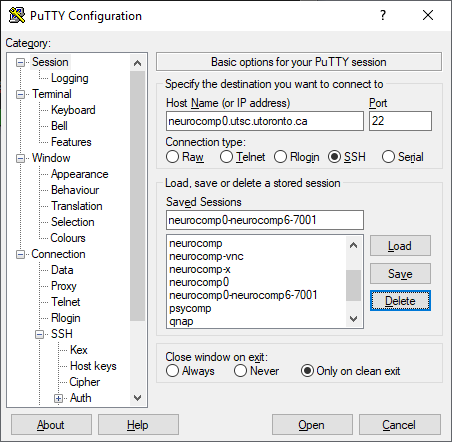
Creating a PuTTY session
Note: For Linux and MacOS users, the following command should work, for example (LPORT and RPORT in this example should both be 7001):ssh -L LPORT:neurocomp6:RPORT USERNAME@neurocomp0.utsc.utoronto.caFor Mac users, if the above tunnel produces errors like “Open failed: connect failed: Name or service not known”, please try the following command:
ssh -L :LPORT:neurocomp6:RPORT USERNAME@neurocomp0.utsc.utoronto.ca
8: PuTTY – adding port forwarding:
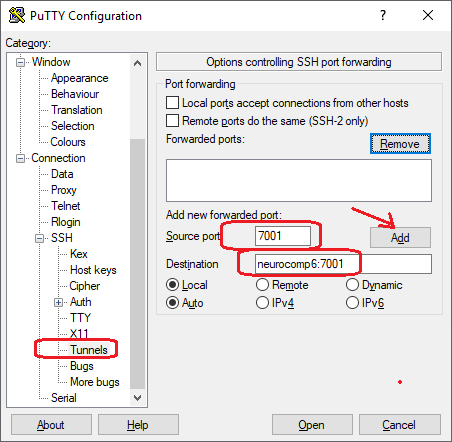
Adding tunnel to a PuTTY session
9: PuTTY – adding port forwarding (2):
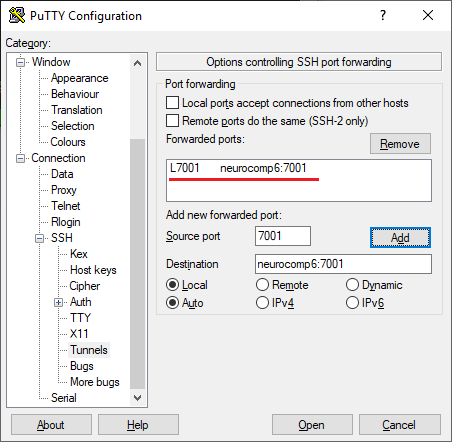
Adding tunnel to a PuTTY session
10: PuTTY – saving session configuration for future use:
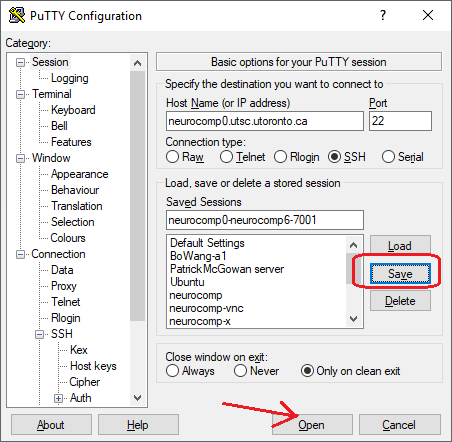
Saving PuTTY session configuration
11: Open a browser on your laptop/desktop and connect to the Jupyter Notebook running on the cluster:
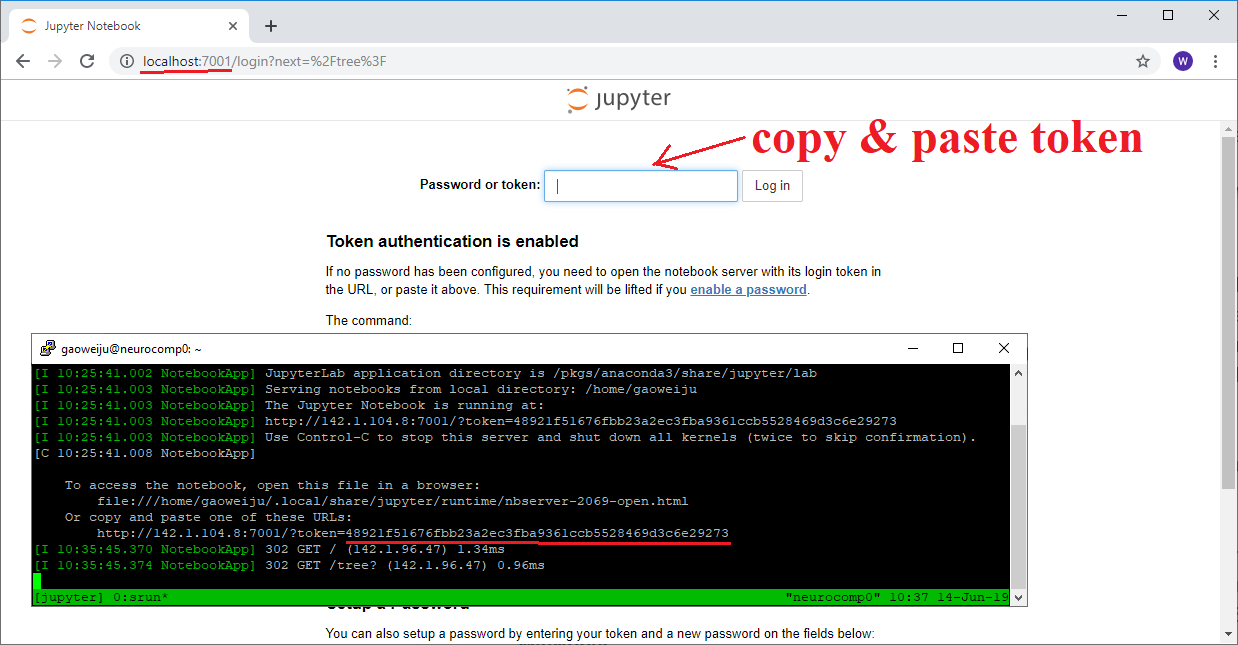
You’ll need the Jupyter Notebook token to log in.
Recent Comments